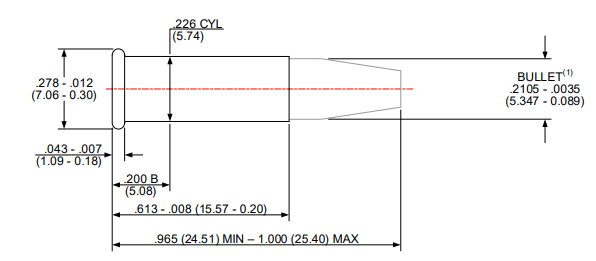I just don't see how this is going to catch on. It's basically a non heeled .22 L.R. At 1,725 FPS it's not much faster than a lot of the high velocity .22 L.R. rounds that are available. Ammo has got to be more expensive. The bullet has a non standard diameter of .2105.
That's not going to do anything for its popularity or performance. It looks to be another solution looking for a problem. The .17 HMR has caught on somewhat. But Winchesters version of that failed. I wish it luck, but I'm afraid in 5 or 10 years it will end up like the 5 MM Remington Rimfire Magnum
There are a lot of those rifles in search of ammunition. And it's expensive when you find it. We'll see what happens.

 www.thefirearmblog.com
www.thefirearmblog.com
That's not going to do anything for its popularity or performance. It looks to be another solution looking for a problem. The .17 HMR has caught on somewhat. But Winchesters version of that failed. I wish it luck, but I'm afraid in 5 or 10 years it will end up like the 5 MM Remington Rimfire Magnum
There are a lot of those rifles in search of ammunition. And it's expensive when you find it. We'll see what happens.

21 SHARP - New Rimfire Cartridge from Winchester -
SAAMI have published cartridge and chamber drawings of a new rimfire cartridge called 21 Sharp designed by Olin Winchester.
